Top Rankings
Branson R-IV School District ranks among the top 20% of public school district in Missouri for:
Category
Attribute
Overall Rank
Highest overall rank (Top 20%)
Math Proficiency
Highest math proficiency (Top 20%)
Graduation Rate
Highest graduation rate (Top 20%)
Diversity
Most diverse schools (Top 1%)
Community Size
Largest student body (number of students) (Top 1%)
For the 2025 school year, there is 1 public preschool serving 381 students in Branson R-IV School District.
Public Preschools in Branson R-IV School District have a diversity score of 0.51, which is less than the Missouri public preschool average of 0.54.
Minority enrollment is 34% of the student body (majority Hispanic), which is less than the Missouri public preschool average of 36% (majority Black).
Overview
This School District
This State (MO)
# Schools
7 Schools
733 Schools
# Students
4,618 Students
201,896 Students
# Teachers
324 Teachers
18,018 Teachers
Student : Teacher Ratio
14:1
14:1
District Rank
Branson R-IV School District, which is ranked within the top 20% of all 553 school districts in Missouri (based off of combined math and reading proficiency testing data) for the 2021-2022 school year.
The school district's graduation rate of 93% has decreased from 94% over five school years.
Overall District Rank
#93 out of 557 school districts
(Top 20%)
(Top 20%)

Math Test Scores (% Proficient)
49%
39%
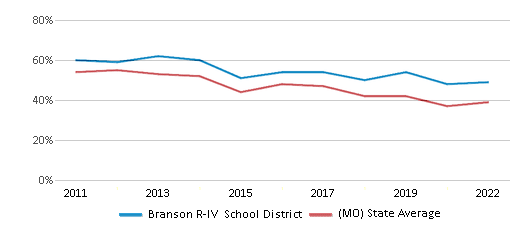
Reading/Language Arts Test Scores (% Proficient)
49%
43%

Science Test Scores (% Proficient)
37%
38%
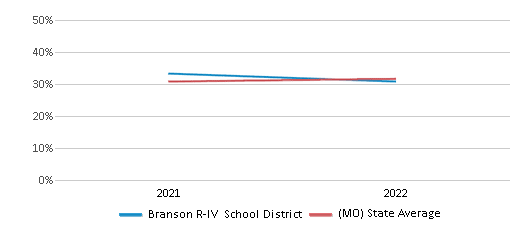
Graduation Rate
93%
90%
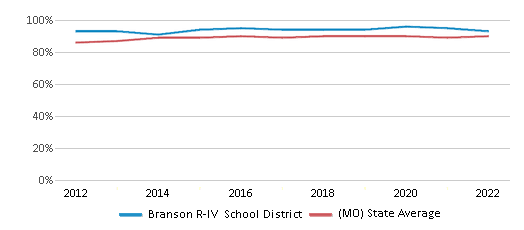
Students by Ethnicity:
Diversity Score
0.46
0.54
# American Indian Students
35 Students
716 Students
% American Indian Students
1%
n/a
# Asian Students
91 Students
3,353 Students
% Asian Students
2%
2%
# Hispanic Students
812 Students
17,293 Students
% Hispanic Students
18%
9%
# Black Students
146 Students
39,639 Students
% Black Students
3%
20%
# White Students
3,297 Students
129,832 Students
% White Students
71%
64%
# Hawaiian Students
12 Students
837 Students
% Hawaiian Students
n/a
n/a
# Two or more races Students
225 Students
10,226 Students
% of Two or more races Students
5%
5%
Students by Grade:
# Students in PK Grade:
231
35,559
# Students in K Grade:
299
31,533
# Students in 1st Grade:
304
29,607
# Students in 2nd Grade:
340
29,116
# Students in 3rd Grade:
307
23,532
# Students in 4th Grade:
324
22,982
# Students in 5th Grade:
312
19,323
# Students in 6th Grade:
322
6,065
# Students in 7th Grade:
364
1,923
# Students in 8th Grade:
376
1,863
# Students in 9th Grade:
378
85
# Students in 10th Grade:
366
51
# Students in 11th Grade:
347
37
# Students in 12th Grade:
348
220
# Ungraded Students:
-
-
District Revenue and Spending
The revenue/student of $13,632 in this school district is less than the state median of $15,081. The school district revenue/student has stayed relatively flat over four school years.
The school district's spending/student of $11,831 is less than the state median of $13,908. The school district spending/student has stayed relatively flat over four school years.
Total Revenue
$63 MM
$13,447 MM
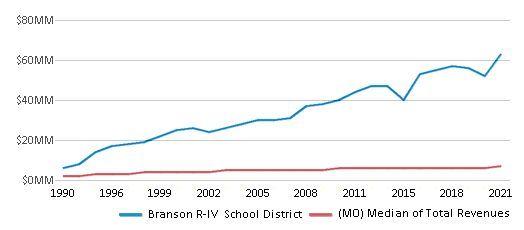
Spending
$55 MM
$12,401 MM
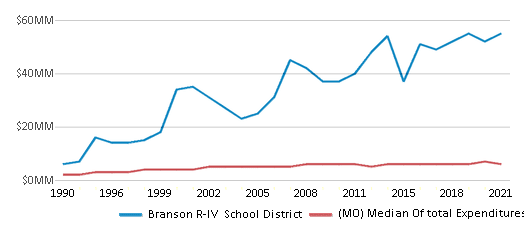
Revenue / Student
$13,632
$15,081
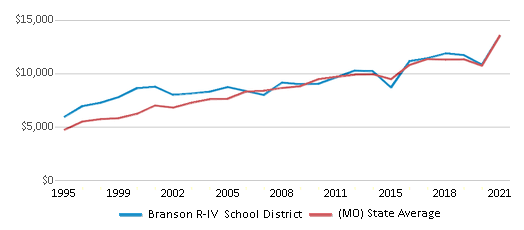
Spending / Student
$11,831
$13,908
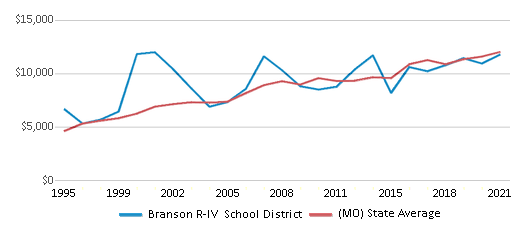
Best Branson R-IV School District Public Preschools (2025)
School
(Math and Reading Proficiency)
(Math and Reading Proficiency)
Location
Grades
Students
Rank: n/an/a
402 Cedar Ridge Dr
Branson, MO 65616
(417) 336-1887
Branson, MO 65616
(417) 336-1887
Grades: PK-K
| 381 students
Recent Articles

Year-Round Or Traditional Schedule?
Which is more appropriate for your child? A year-round attendance schedule or traditional schedule? We look at the pros and cons.

Why You Should Encourage Your Child to Join a Sports Team
Participating in team sports has a great many benefits for children, there is no doubt. In this article you will learn what those benefits are.

White Students are Now the Minority in U.S. Public Schools
Increasing birth rates among immigrant families from Asia and Central and South America, combined with lower birth rates among white families, means that for the first time in history, public school students in the United States are majority-minority. This shift in demographics poses difficulties for schools as they work to accommodate children of varying language abilities and socio-economic backgrounds.





